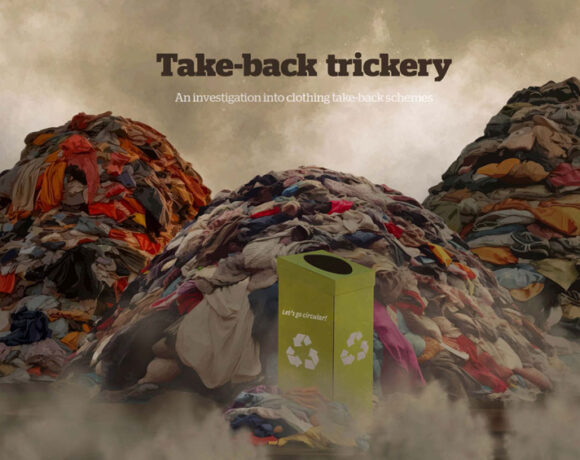Bluesign And SCTI Propel Textile Sustainability With SCI Donation To ZDHC

In a landmark move for the textile industry, Bluesign and SCTI have donated the pioneering Sustainable Chemistry Index (SCI) Methodology to ZDHC. This strategic collaboration, announced on June 19, 2024, in Singapore, St. Gallen and Amsterdam, aims to transform chemical management across the textile, leather and fashion industries, addressing environmental impact comprehensively.
Tackling the Challenge of Harmful Chemicals in Fashion
The textile industry has long grappled with the use of hazardous chemicals in clothing. Despite numerous efforts and overlapping standards, the industry has struggled with inconsistent regulations, data discrepancies and a lack of coordinated action. This fragmented approach has hindered progress and left consumers uninformed about the environmental impact of these industries.
A Unified Effort for Sustainable Solutions
SCTI, a consortium of innovative chemical manufacturers, and Bluesign, a leader in sustainability solutions, are spearheading this initiative. SCTI aims to make sustainable chemistry standard practice in the textile industry, while Bluesign brings its expertise in safe chemical management, environmental protection and resource efficiency. ZDHC, driven by major fashion brands, is committed to eliminating hazardous chemicals from the fashion supply chain through robust tools and guidelines.
The Genesis of Sustainable Chemistry Index (SCI)
In 2022, SCTI and Bluesign introduced the Sustainable Chemistry Index (SCI), a comprehensive tool designed to transcend existing chemical assessments and offer a holistic evaluation of environmental impact. The SCI provides a unified language and framework for the global textile industry, setting new benchmarks for sustainability.
Innovative Parameters for Sustainable Future
The SCI assesses the sustainability of chemical products by evaluating parameters such as supply chain transparency, responsible sourcing, reduction of fossil dependency, product carbon footprint, resource consumption and end-of-life impact. This transparent framework enables the industry to better understand and improve the sustainability of chemicals used in garment production, promoting circularity.
A Collaborative Donation to Advance the Industry
To foster industry-wide collaboration, SCTI and Bluesign have donated the SCI to ZDHC, where it will serve as the foundation of the Chemicals to Zero (CTZ-A) programme, the highest level of sustainable chemistry within ZDHC. In 2024, the SCI content will undergo ZDHC’s stakeholder engagement and consultation processes, enhancing the roadmap to Zero programme by addressing sustainability and circularity. The SCI content will be made publicly available by ZDHC, promoting widespread adoption and impact.
Industry Leaders Speak
“We have recognized the need for a unified approach in our market. The SCI content converges multiple methodologies, elevating sustainable chemistry for the benefit of our community,” said Wolfgang Schumann, RUDOLF Managing Director, SCTI Chairman, and ZDHC board member.
Daniel Rüfenacht, Bluesign CEO, added, “We are proud to continue our journey with the SCI initiative and look forward to advancing sustainability in our industry with our partners.”
Isabella Tonaco, SCTI Executive Director, emphasized, “Our initiative elevates collective action and empowers the textile and fashion industries to make sustainable choices through solidarity.”
Frank Michel, ZDHC CEO, concluded, “By integrating the SCI into our Chemicals to Zero Aspirational Level and making it publicly available, we are demonstrating thought leadership and engaging our community to drive positive change.”















